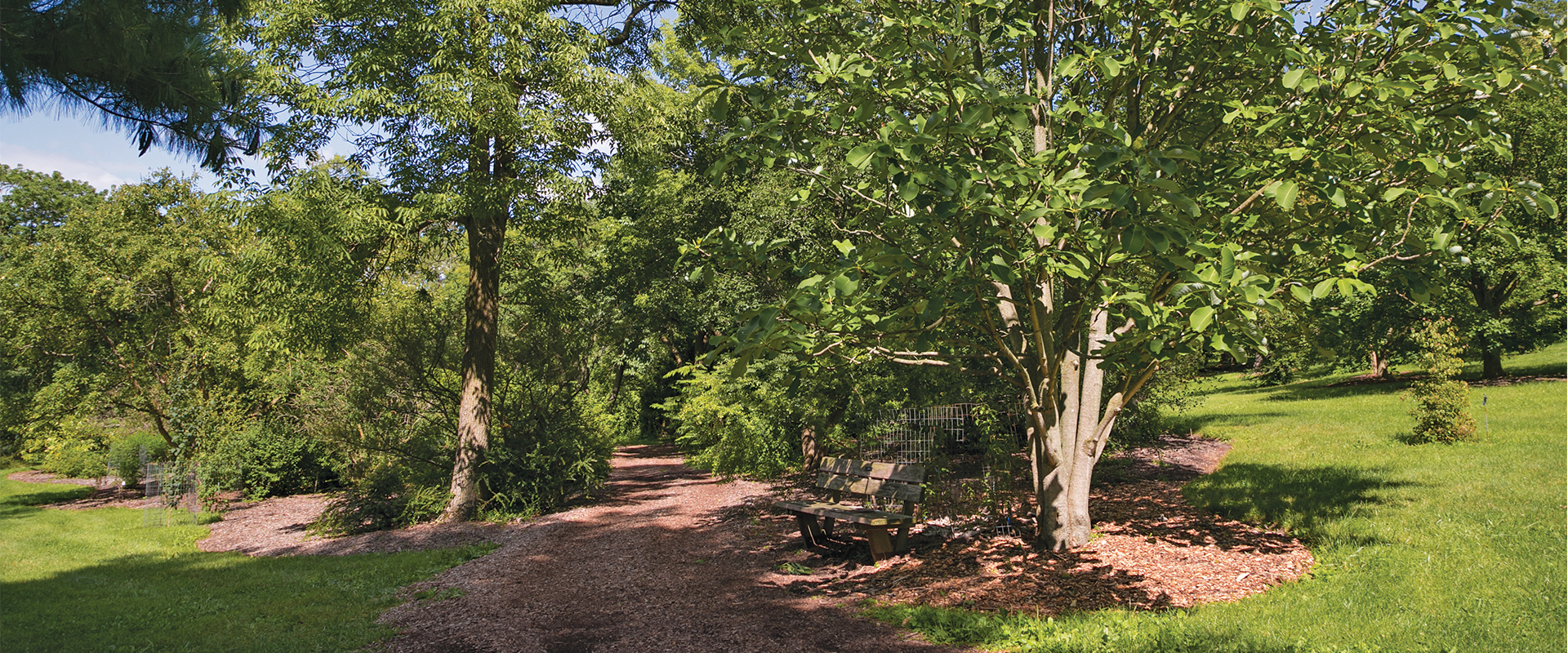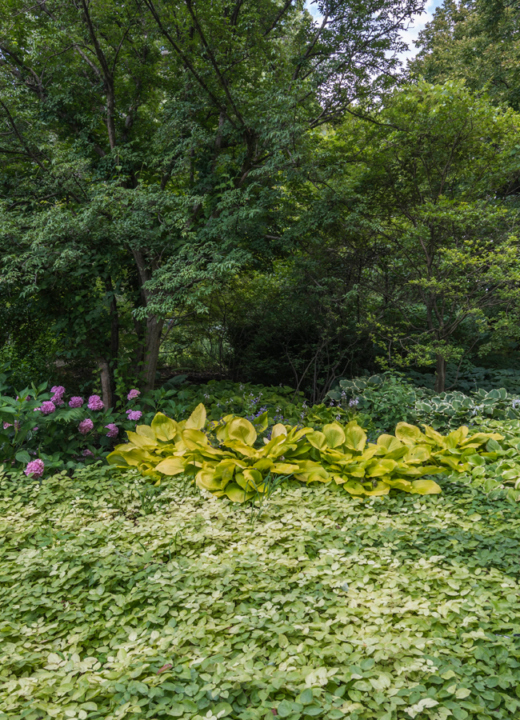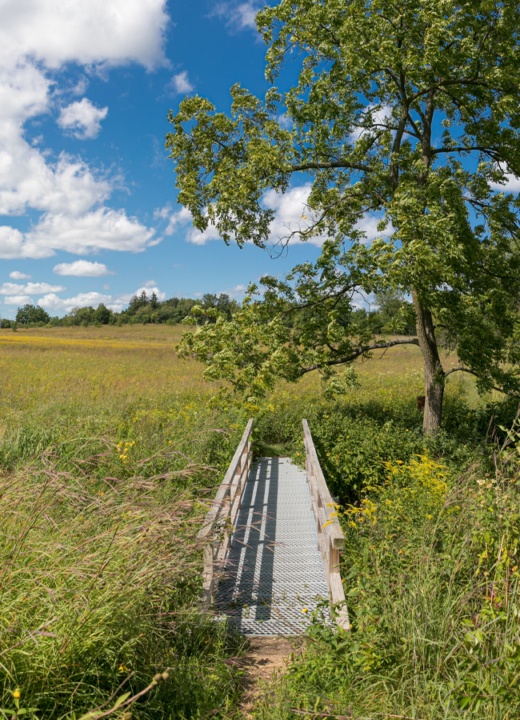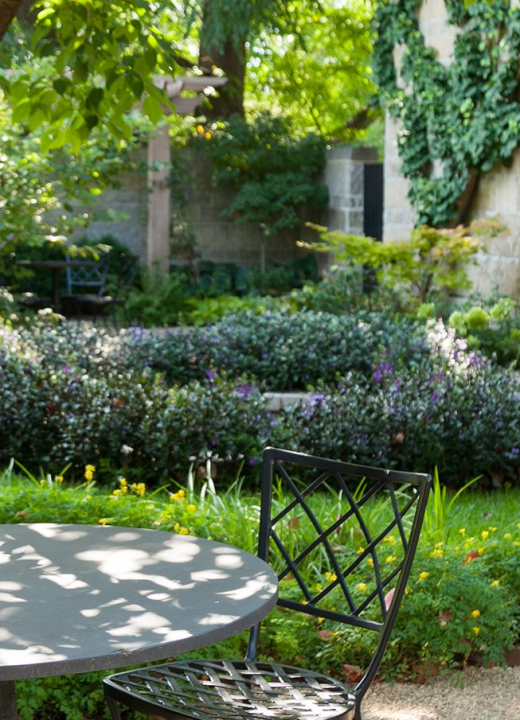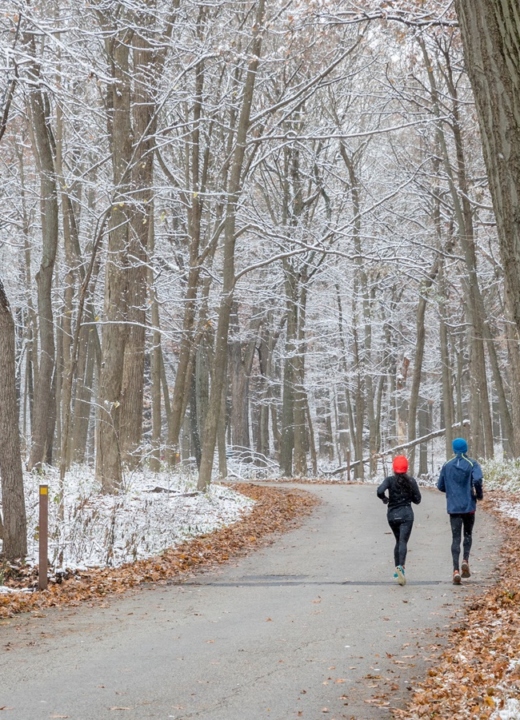Asia has some of the most diverse plant life in the temperate regions of the Northern Hemisphere. Because the Midwest’s climate is fairly similar, plants are well represented at The Morton Arboretum.
The Temperate Asia Collection includes plants from central and western Asia, China, Japan, and Korea. China, Japan, and Korea are especially rich in plant life because they were not affected by the glaciers that ground across much of Europe and the northern parts of North America 15,000 to 10,000 years ago, wiping out many plant species on these continents.
Asia has attracted plant explorers from the West since the 18th century. They collected, documented, and introduced many species into Western culture. For example, a pagoda tree from Japan (Sophora japonica) was growing in the Elgin Botanical Garden in Manhattan as early as 1811.
It is difficult to think of today’s American gardens without some Asian plants. Familiar examples include the ginkgo or maidenhair tree (Ginkgo biloba), tree peony (Paeonia suffruticosa), golden larch (Pseudolarix amabilis), viburnum (Viburnum), forsythia (Forsythia), and rhododendron (Rhododendron).
The Temperate Asia Collection displays species that were acquired on expeditions to China and the Russian Far East and through seed exchanges with other botanical gardens and institutions. Modern plant collecting is strictly regulated and is only undertaken in collaboration with the host countries.
The collections are organized on the Arboretum grounds to take advantage of landscape and environmental features appropriate for each species.
Central and Western Asia
Plants native to the arid mountainous regions of central and western Asia flourish on rocky hillsides at The Morton Arboretum.
East Side of the Arboretum, Parking Lot 17, near Main Trail Loop 1
The collection is attractive in all seasons, but early summer is a special time to visit, when many of the trees and plants are in full bloom after spring rains have brought them nutrients and energy.
Look for the scaly bark of the large Turkish hazelnut (Corylus colurna) and Persian parrotia (Parrotia persica), and the yellow spring flowers and edible summer fruits of Cornelian-cherry dogwood (Cornus mas). Don’t miss the towering specimens of Nordmann firs (Abies nordmanniana), Oriental spruce (Picea orientalis), and Schrenk’s spruce (Picea schrenkiana) that are focal points in the collection. These conifers are outstanding with snow-covered branches in winter. You’ll also see many younger, wild-collected plants that the Arboretum’s tree scientists are observing for hardiness and beauty.
Started in 1925, the Central and Western Asia Collection has grown to include nearly 450 plants, representing 151 species, on nearly two acres. The plants come from the western border of China westward to the Mediterranean Sea and the Black Sea, from such countries as Tajikistan, Turkmenistan, Kazakhstan, Kyrgyzstan, Armenia, and Georgia.
To replicate the cold, sunny, dry climate of the plants’ native habitats, parts of the collection are displayed in beds of sand and gravel on rock outcroppings in sun-exposed conditions. Because these plants evolved in dry climates, they are well-adapted to tolerate the periodic droughts common in the Chicago region.
China
The plants from the incredibly diverse China Collection at The Morton Arboretum will dazzle you with their rich beauty. Explore this collection and imagine the fantastic places these plants came from, such as the foothills of China’s world-famous Qinling Mountains or a temperate rain forest inhabited by pandas, panthers, macaques, and golden monkeys.
East Side of the Arboretum, Parking Lot 2, near Main Trail Loop 1
The China Collection was started in 1925 and is the most diverse geographic collection in the Arboretum. It contains more than 408 kinds of trees, shrubs, vines, and herbaceous plants growing along the south side of the East Branch of the DuPage River. More than 75 percent of the plants in this collection come from wild sources.
As the collection’s richness reflects, China has been a great source for many beautiful plants. Interest in studying the country’s flora has led Arboretum staff members on numerous trips to China. Modern plant collecting is strictly regulated and is only undertaken in collaboration with the host countries.
Some of the key species in this collection are dawn redwood (Metasequoia glyptostroboides), Ussurian pear (Pyrus ussuriensis), lacebark pine (Pinus bungeana), and Farge’s hazelnut (Corylus fargesii).
The dawn redwood is a legendary tree first described in 1941 as a fossil from the Mesozoic Era (about 200 million years ago), and it was thought to be extinct. Several years later, a Chinese scientist took samples from an unidentified tree discovered in a remote village. The tree turned out to be a living dawn redwood. In 1947, the Arnold Arboretum of Harvard University sponsored an expedition to collect seeds from this tree and a newly discovered small stand, and since then, the species once thought to be extinct has been in cultivation worldwide. Mature dawn redwoods develop beautiful buttresses on their lower trunks, and throughout their lives these trees exhibit gorgeous red-brown fall color.
Japan
You may imagine that you’re walking through the forests of Hokkaido when you visit the Japan Collection at The Morton Arboretum.
East Side of the Arboretum, Parking Lot 2, near Main Trail Loop 1
When we think of Japan, we often think of cherry blossoms and maples. Yet about 5,600 species of trees, shrubs and other green plants flourish there thanks to the country’s varied climate zones. Within the string of more than 3,000 islands called the Japanese archipelago, subtropical, temperate, and alpine-arctic zones provide habitat for many species. The islands correspond in latitude to the Atlantic states from Maine to northern Florida, with nearly the same climatic range.
The Arboretum’s collection contains plants native to Japan’s main islands: Hokkaido, Honshu, Shikoku, and Kyushu. Since 1978, additions to this collection have reflected an emphasis by the Arboretum on acquiring wild-collected genetic material. Modern plant collecting is strictly regulated and is only undertaken in collaboration with the host countries.
In 2016, the Japan Collection was extended southward across the main road. The expanded collection uses varied landscape features to provide better growing conditions for many plant species.
The collection includes maple, cherry, and pear trees, among them the Ussurian pear (Pyrus ussuriensis). This species was one of the first specimens to be planted in 1922. It was originally acquired in Japan by Ernest H. Wilson, a renowned plant collector. Today the tree is 20 feet high and 40 feet wide. It is striking in spring, when it is covered with pure white blossoms.
The katsura tree (Cercidiphyllum japonicum) is another noteworthy species, with a sensory surprise. One of the largest hardwoods in Asia, it can reach heights of 130 to 150 [k3] feet (40 to 45 meters) and trunk diameters of 7 feet (2 meters). In autumn, its heart-shaped leaves turn a muted yellow and release a pleasant scent like cotton candy.
Korea
The Korean plant landscape features deciduous hardwood forests dominated by maples, oaks, and hornbeams that are adapted to hot humid summers and long cold winters.
East Side of the Arboretum, Parking Lot 2, near Main Trail Loop 1
It’s no surprise that the plants of The Morton Arboretum’s Korea Collection can flourish in Illinois, which has a similar climate. The Korean Peninsula is about the size of Pennsylvania. Historically described as the [k1] “Land of Morning Calm,” the region boasts 5,000 years of rich history and culture. But its diverse woody plants, totaling more than 1,300 species, were not well known by western botanists until the early 20th century.
Ernest H. Wilson, a renowned plant collector, explored the country in 1917. Many American horticulturists followed in pursuit of new and hardy plants for North American gardens. Modern plant collecting is strictly regulated and is only undertaken in collaboration with the host countries. The Arboretum’s collection, established in 1959, includes more than 160 kinds of plants and immerses guests in the Korean Peninsula’s diversity.
You can enjoy the Korea Collection year-round. In May, look for dainty white flowers of Oyama magnolia (Magnolia sieboldii), enjoy the brilliant fall color of the three-flowered maple (Acer triflorum), and in winter look for attractive peeling bark on Dahurian birches (Betula davurica[k2] ). In this collection you can also see endemic species (those that occur only in Korean region), including white-forsythia (Abeliophyllum distichum), Korean fir (Abies koreana), Korean maackia (Maackia fauriei), and Korean stewartia (Stewartia koreana).
